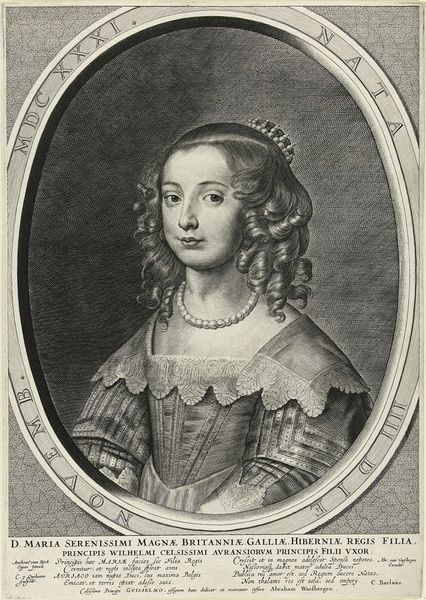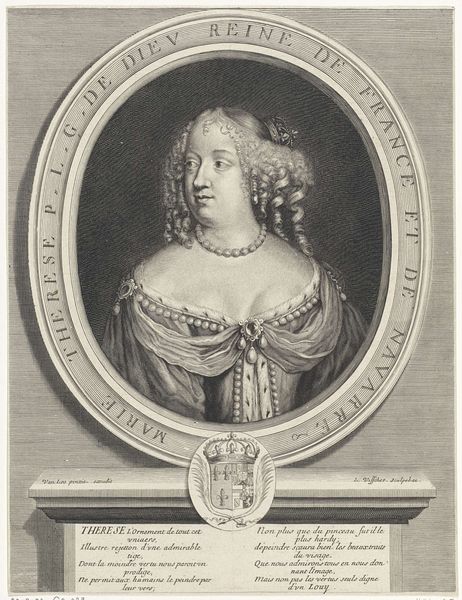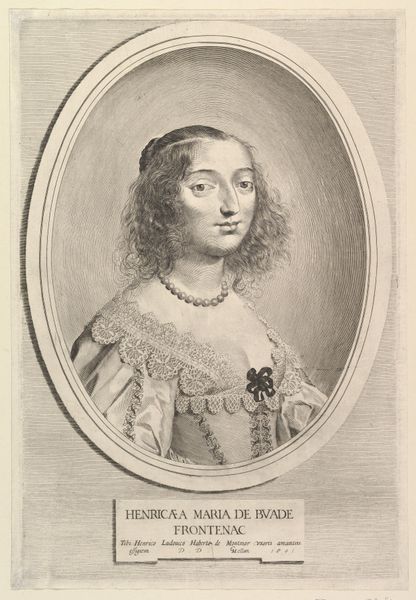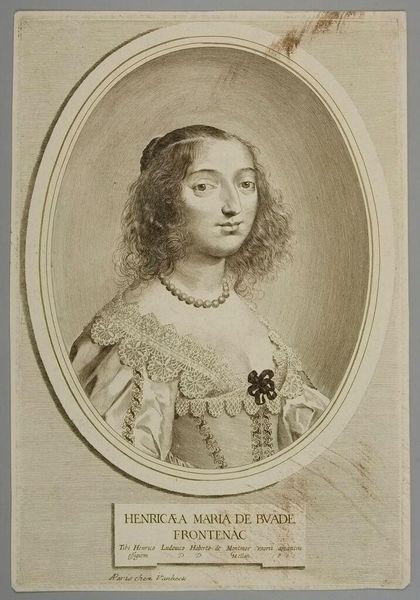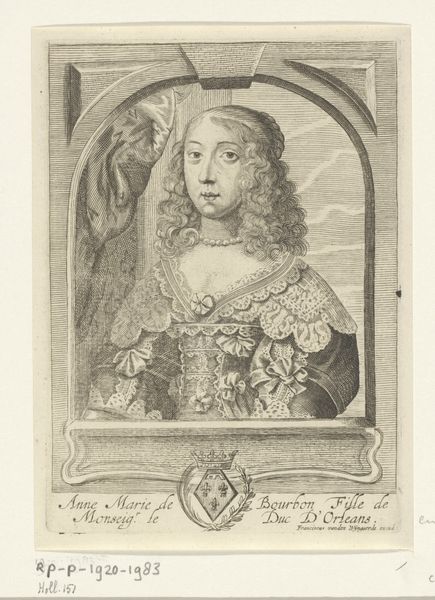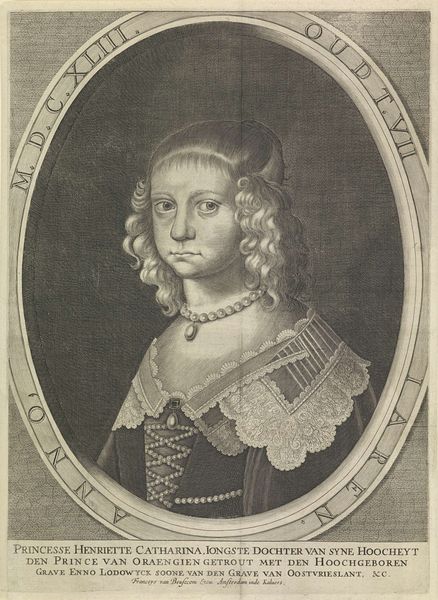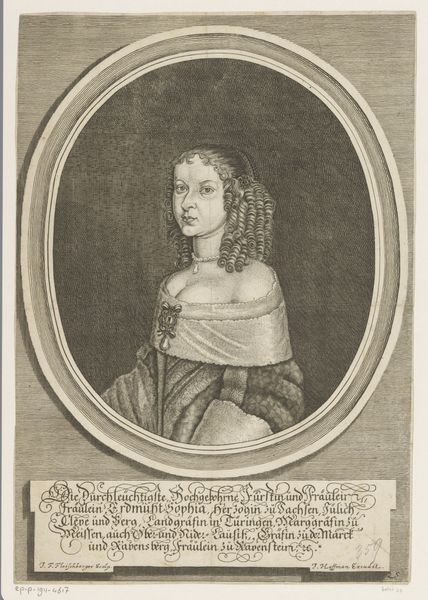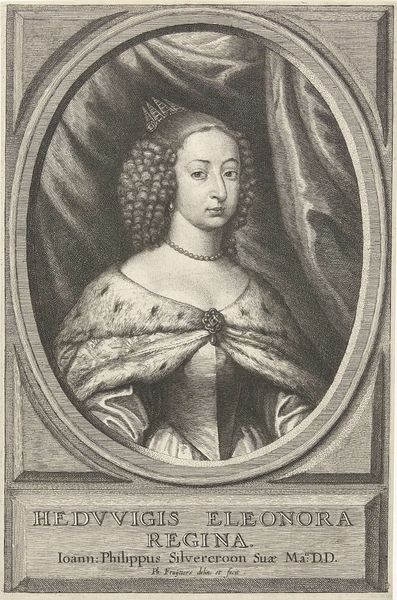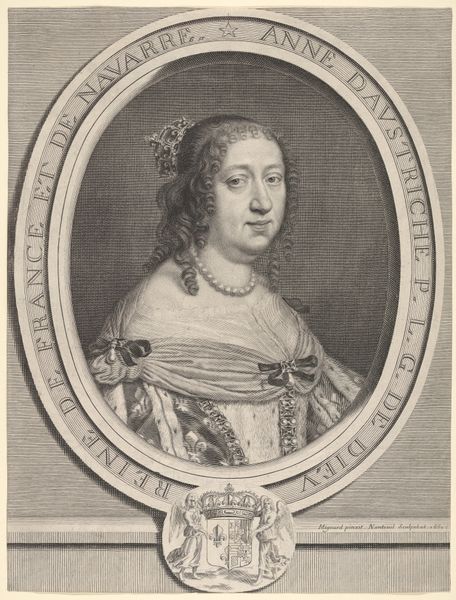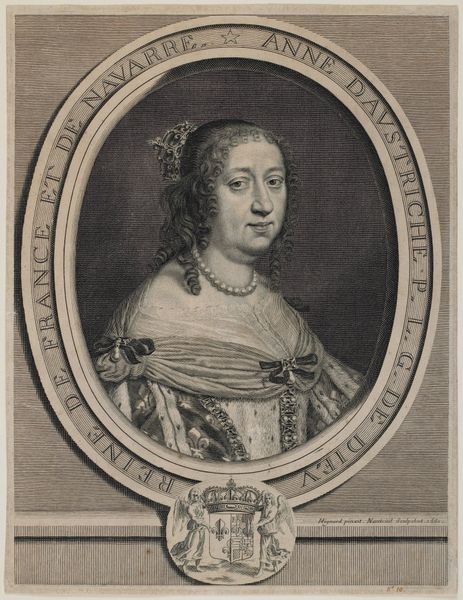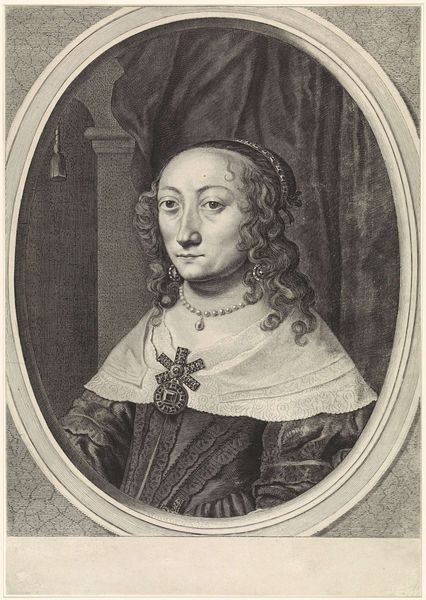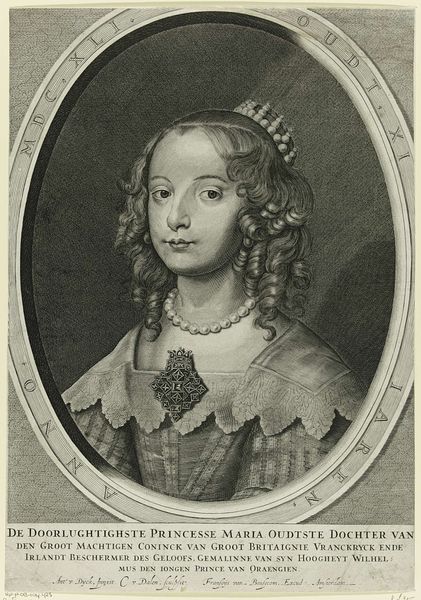
Portret van Louise Henriëtte, prinses van Oranje, op 12-jarige leeftijd 1640
0:00
0:00
engraving
#
portrait
#
baroque
#
dutch-golden-age
#
engraving
Dimensions: height 432 mm, width 311 mm
Copyright: Rijks Museum: Open Domain
Curator: Take a moment to contemplate this detailed engraving currently housed at the Rijksmuseum. The piece, dating back to 1640, is a portrait of Louise Henriëtte, Princess of Orange, at the tender age of twelve, made by Crispijn van den Queborn. Editor: It strikes me as rather melancholy for a portrait of someone so young, doesn't it? The lines are so precise and, dare I say, a bit rigid, despite the evident skill in the rendering of textures and patterns. Curator: Indeed. Though crafted using the rigid process of engraving, there is still such attention to her ornamentation and visage that transcends merely recording a likeness; the very image carries symbolic weight. Notice how the oval frame suggests not just containment but an almost iconic presentation. Editor: Absolutely. I'm drawn to the materiality. Look at the way he suggests different fabrics through such meticulous hatching! It makes me think about the actual labor involved, the intense focus Queborn must have brought to each mark. The costuming obviously suggests power and status, so the artist probably benefited from it, too. Curator: Undoubtedly. And her clothing—pearls, lace—these aren’t just decorative; they symbolize purity, status, and dynastic legacy, a cultural expectation weighed heavily on young women of her station. The lettering around the portrait frame further adds to the feeling, serving both an ornamental function and a statement. Editor: Which would have involved careful labor as well! It's a fascinating balance. The mechanical reproduction of engraving attempting to mimic painting in portraying human presence—quite a social transaction at the end of the day. It underscores the commodification of her image, too. Curator: Exactly, it reflects a precise vision. To look closer we notice that there is no painterly rendering or even any real modeling that shows any light sources, giving this Princess of Orange a nearly disembodied, dream-like and symbolic importance for all to consume! Editor: Yes, I found myself seeing how this image served the market needs of its day! And yet, still hints at what would soon become widespread art styles from Europe to colonial settlements across America. Curator: Precisely! A valuable object to contemplate and reflect upon when walking through the museum galleries. Editor: Indeed, seeing it here is quite grounding. Thanks for your expertise, I look forward to discussing our next materialist and iconographic investigation.
Comments
No comments
Be the first to comment and join the conversation on the ultimate creative platform.
